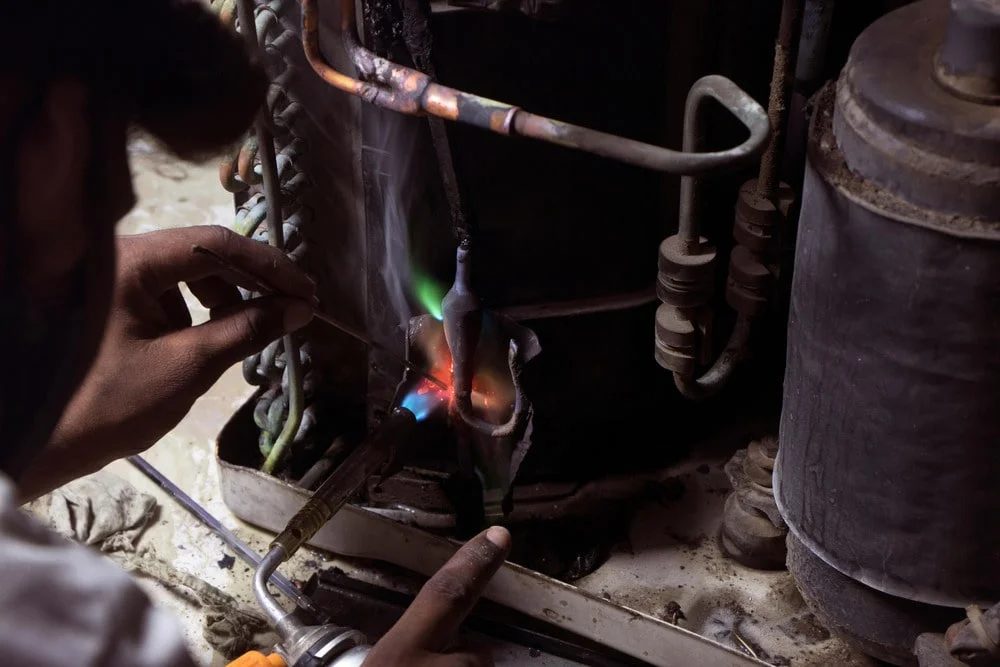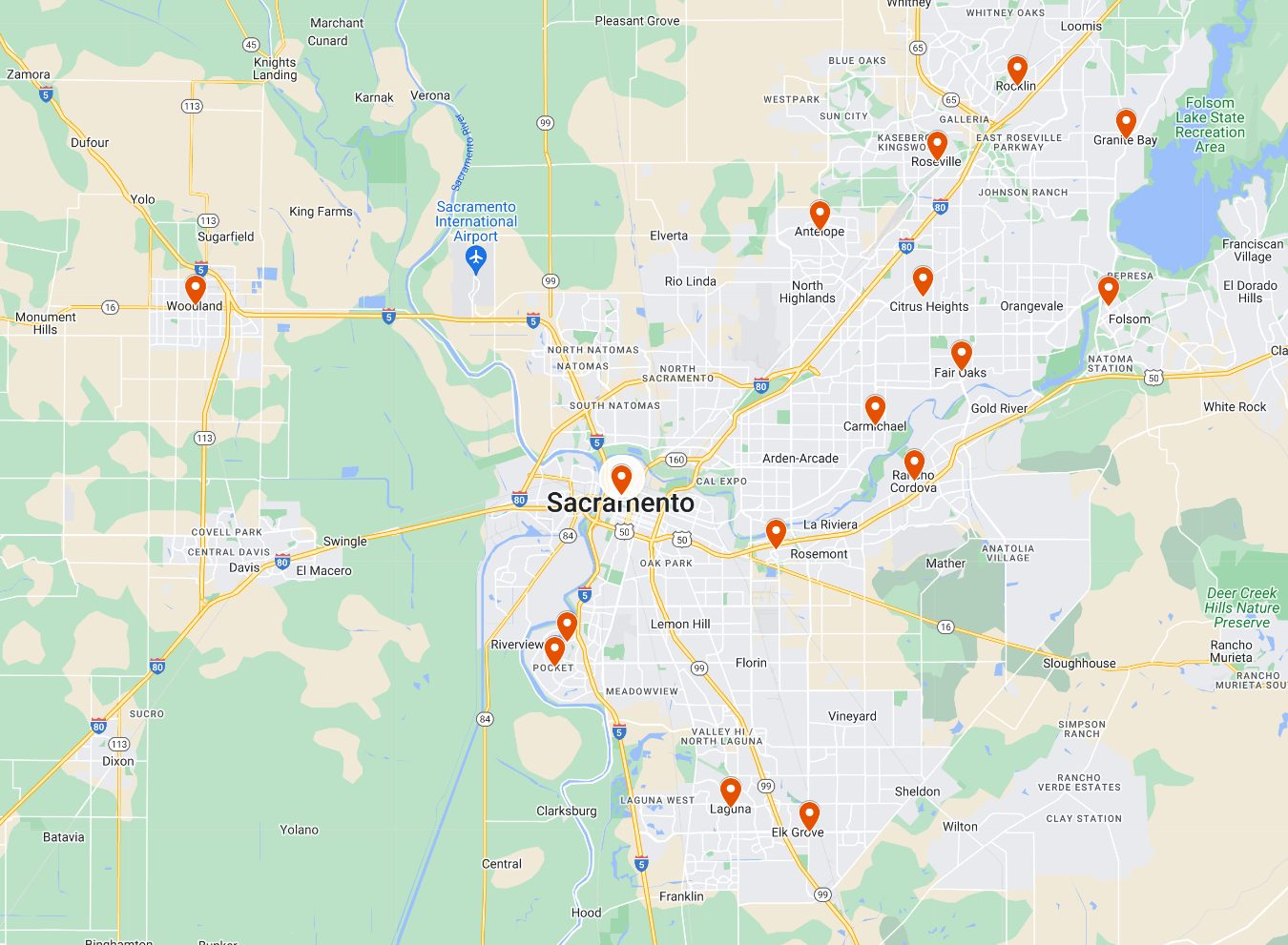If the pilot light goes out on the furnace, is it safe in the house? You probably don’t think much about your furnace pilot light until it suddenly goes out. Then the worry starts. With more than 60 million homes and businesses in the U.S. relying on natural gas, according to the American Gas Association, you’re not alone.
Is this normal, or could it be dangerous? What about gas leaks? Do you need to call a professional? The truth is, sometimes a pilot light going out is harmless. Other times, it’s a warning sign you shouldn’t ignore. Let’s go over what’s normal, what’s not, and when you need to take action when your furnace pilot light goes out.
How to Identify if Your Furnace Pilot Light Is Out
Woke up to a cold house? If your heat isn’t kicking on, the first thing to check is the pilot light. This small flame inside your furnace keeps the system running. if it goes out, the burners won’t ignite.
Look through the small window near the bottom of the furnace. If you don’t see a steady blue flame, your pilot light went out. Some furnaces have a safety lockout feature that prevents gas from flowing when the pilot goes out. Other models may require a manual reset. If your system has a digital display, you might see an error code on the screen.
Why Does a Furnace Pilot Light Goes Out?
A pilot light isn’t supposed to go out randomly. If it does, there’s usually a reason:
- Drafts or airflow issues
- Dirty pilot assembly
- Faulty thermocouple
- Gas supply problems
- Old Age
A strong gust of air from a window, vent, or door can blow out the flame. There could also be dust and debris clogging the small opening where the gas flows. Knowing the reason why the pilot light went out can help you determine if it’s a simple fix or something more serious.
Why the Pilot Light Going Out Can Be a Concern
Sometimes, a pilot light issue is nothing more than an inconvenience. Other times, it could be a sign of a bigger and dangerous problem. If the thermocouple isn’t working, gas could continue flowing even when the flame is out. This is a dangerous situation for any homeowner.
A faulty or weak flame can lead to incomplete combustion. This can produce carbon monoxide, an invisible gas that becomes dangerous in high concentrations.
Steps to Take When the Furnace Pilot Light Goes Out
If your furnace isn’t producing heat, and you suspect the pilot light went out, here’s what to do.
Turn Off the Furnace Immediately
Before attempting anything, turn off the gas control knob and wait a few minutes. This prevents any gas buildup and allows the system to reset.
Inspect for Gas Leaks
A slight gas smell is normal when the pilot light goes out. If you continue to smell a strong, lingering odor, do not attempt to fix it yourself. Leave the house and call a professional. Attempting to relight a pilot light without proper precautions can lead to gas explosions. For instance, there have been incidents where employees sustained burns while trying to relight pilot lights.

Relighting the Pilot Light
You might be wondering, can I relight the pilot light by myself? In most cases, yes. Check your furnace’s instructions. Many have steps printed on the unit. Generally, you’ll:
- Turn the gas knob to “off” and wait for about five minutes for the gas to clear.
- Switch the knob to “pilot” and hold it down while igniting the flame with the ignitor button or a match.
- Keep holding the knob for 30–60 seconds, then release. If the flame stays lit, turn the knob back to “on.”
If lighting pilot light furnace doesn’t work or if it goes out again shortly after, it’s better to call an expert.
If your pilot light stays lit but your furnace isn’t producing heat, the issue might be with your thermostat. Learn more about thermostat troubleshooting to ensure your heating system works efficiently.
Regular Furnace Maintenance
Regular maintenance helps prevent buildups and faulty parts from causing bigger problems. A professional HVAC technician can clean the system, check for gas leaks, and make sure everything is working properly.
Preventive Measures for Furnace Safety
To avoid dealing with a pilot light issue in the middle of winter, take steps to keep your furnace in top shape.
Install Carbon Monoxide Detectors
If your furnace isn’t burning gas properly, it could release carbon monoxide into your home. Since this gas is odorless and invisible, a detector is the only way to know if there’s a problem.
Schedule Routine Furnace Maintenance
A professional should inspect your furnace at least once a year. They’ll check for worn-out parts, clean buildup from the pilot light, and test for potential gas leaks.
Upgrade Old Furnaces
If your furnace pilot light goes out repeatedly, your system could be aging out. Older furnaces break down more often and use more energy to produce heat. Upgrading to a newer model or get your furnaces replaced can save you from unexpected breakdowns and repairs.
Don’t Ignore a Failing Pilot Light
A furnace pilot light that keeps going out could mean something’s wrong with your furnace. Gas leaks, faulty thermocouples, or an aging furnace aren’t problems you want to gamble with. If you’re unsure why it won’t stay lit or suspect a gas issue, call (916) 452-2477. Garick Air Conditioning has the expertise to diagnose and fix any pilot light issue.
FAQs About Furnace Pilot Light
Can I relight the furnace pilot light myself?
Yes, in most cases. Turn off the gas for a few minutes, switch the knob to “pilot,” and use the ignitor or a match while holding the button down.
What should I do if I smell gas after the furnace pilot light goes out?
If the gas smell is strong or doesn’t fade, leave your home immediately and call your gas provider or a professional HVAC technician. Do not try to relight the pilot or use electrical devices until the source of the leak is fixed.
Why does the pilot light keep going out repeatedly?
Common causes include a faulty thermocouple, gas supply issues, a dirty pilot orifice, or drafts blowing out the flame.
Should I replace my pilot light system with an electronic ignition?
If your furnace is older and experiencing frequent pilot light issues, switching to an electronic ignition can improve efficiency and reliability. Newer furnaces use electronic igniters instead of standing pilot lights, reducing energy waste and maintenance needs.
How long does it take to relight a furnace pilot light?
Relighting usually takes about 5–10 minutes. If the flame won’t stay lit after multiple attempts, there may be an underlying issue that requires professional attention.
Can bad weather affect my furnace’s pilot light?
Yes, strong winds can blow out the pilot light, especially if the furnace is in a drafty area. Extreme cold can also affect gas pressure, making it harder for the pilot light to stay lit.





